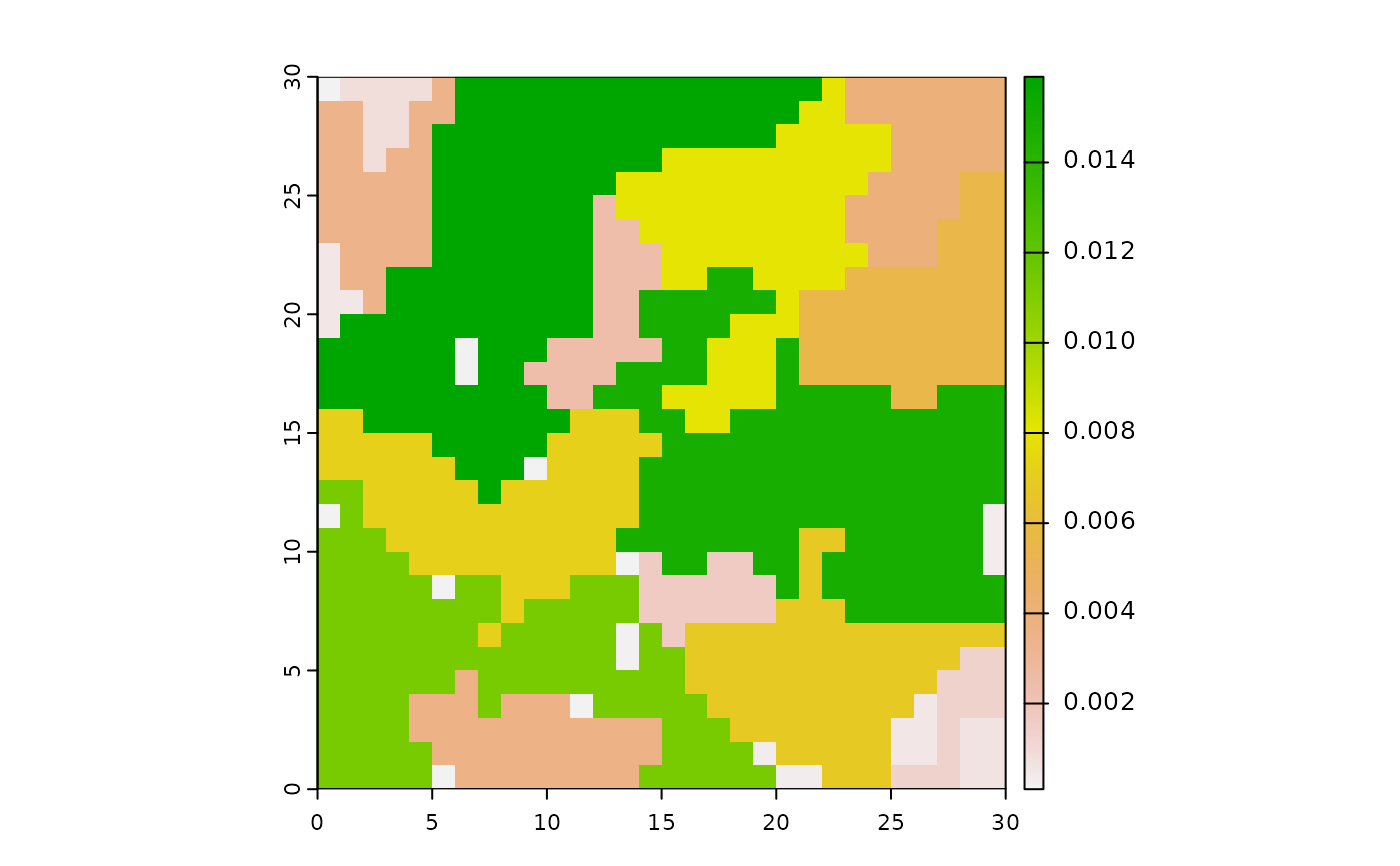Spatialize landscape metric values
Usage
spatialize_lsm(
landscape,
level = "patch",
metric = NULL,
name = NULL,
type = NULL,
what = NULL,
directions = 8,
progress = FALSE,
to_disk = getOption("to_disk", default = FALSE),
...
)Arguments
- landscape
A categorical raster object: SpatRaster; Raster* Layer, Stack, Brick; stars or a list of SpatRasters.
- level
Level of metrics. Either 'patch', 'class' or 'landscape' (or vector with combination).
- metric
Abbreviation of metrics (e.g. 'area').
- name
Full name of metrics (e.g. 'core area')
- type
Type according to FRAGSTATS grouping (e.g. 'aggregation metrics').
- what
Selected level of metrics: either "patch", "class" or "landscape". It is also possible to specify functions as a vector of strings, e.g.
what = c("lsm_c_ca", "lsm_l_ta").- directions
The number of directions in which patches should be connected: 4 (rook's case) or 8 (queen's case).
- progress
Print progress report.
- to_disk
If TRUE raster will be saved to disk.
- ...
Arguments passed on to
calculate_lsm().
Details
The functions returns a nested list with RasterLayers. The first level
contains each input layer (only one element if RasterLayer was provided).
The second level contains a RasterLayer for each selected metric
(see list_lsm for details) where each cell has the landscape metric
value of the patch it belongs to. Only patch level metrics are allowed.
For all metrics based on distances or areas please make sure your data is valid
using check_landscape.

